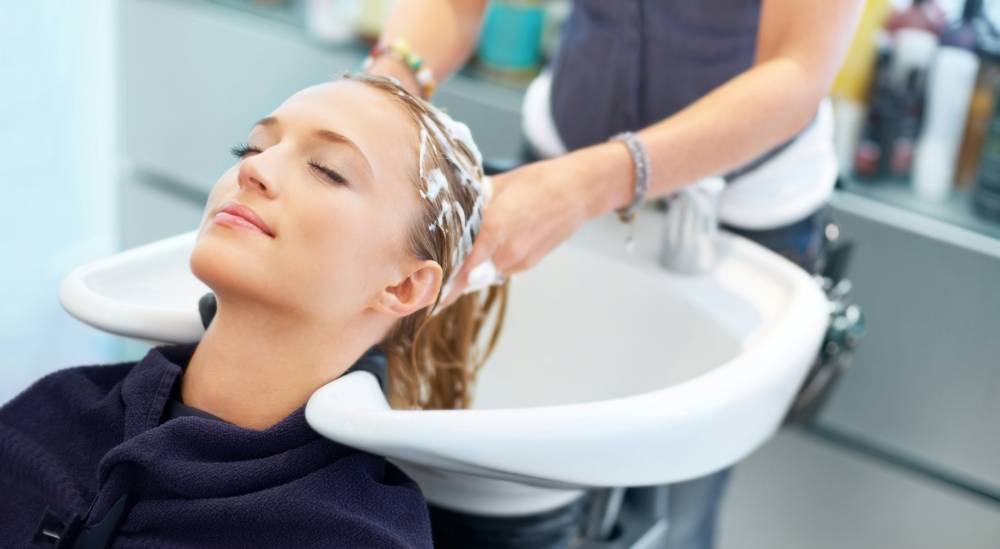Hairapy? Making hair and minds better

Hairstylists have long been our accidental therapists. They see us at our most vulnerable (post-cry blowouts, anyone?) and our most confident (“Give me curtain bangs, I’m changing my life”). They witness new beginnings, life milestones, trauma, and anxieties—all while mixing toner and offering “girl, you deserve better” energy.
Hairstylists are exposed to more than 2,000 hours of conversations a year with their clients, and 75 percent of clients consider visiting their hairstylist a form of self-care, according to a study conducted by L’Oréal Professionnel.
More than getting a new ‘do (or maintenance), there’s a psychological layer to why people feel so at ease in salons. Research from the University of London Institutional Repository shows that touch can feel nurturing, even in small moments like detangling, blow-drying, or styling. Hairstyling is considered “body work,” involving physical manipulation and conversational interaction—a combination that naturally creates space that feels safe and supportive.
The emotional labor behind the craft
Many people schedule salon visits—not only for appearance, but for routine, community, and emotional grounding. Salon workers focus on their clients’ well-being, aiming to help them feel better not just about their looks but also emotionally.
But this emotional closeness comes with weight. Hair professionals don’t just cut and color—they listen, absorb stories, and manage emotions in their chair. Yet unlike therapists, they aren’t formally trained for these conversations. They rely on instinct and empathy, balancing their own feelings while keeping the space warm and supportive.
Clients expect to leave feeling lighter, and stylists carry that emotional responsibility every day. And this unseen emotional labor is part of what makes salons feel safe but also takes a toll that often goes unrecognized.
Research published in Sociology of Health & Illness notes that hairstylists often act as informal caregivers, hearing about topics ranging from stress and illness to domestic issues, trauma, and loneliness. That kind of emotional exposure can add strain to an already demanding job.
This also links to what researchers call “compassion fatigue,” sometimes described as “the cost of caring.” It’s similar to burnout but triggered by second-hand exposure to distressing experiences. Symptoms can include mental or physical exhaustion, emotional detachment, and disassociation. And while many stylists build meaningful, long-term relationships with clients, supporting others without supporting themselves can take a toll.
A 2023 survey reflect this reality: Sixty-five percent of hairstylists have experienced anxiety, burnout, or depression at some point in their careers.
The help they need
As more people acknowledge the mental load stylists carry, new support systems are emerging to help them care for clients and themselves.
One example is PsychoHairapy, a program created to equip beauty professionals with basic mental health tools. The idea isn’t to turn stylists into therapists but to help them listen with intention, spot signs of distress, and gently guide clients toward professional help when conversations go deeper than a cut or color. It teaches boundaries, too—like knowing when to lend an ear and when to step back.
Major beauty brands are getting involved as well. L’Oréal Professionnel has introduced free mental health support and training for stylists, recognizing that the emotional side of the job is just as real as the physical one. The brand aims to reach 200,000 hairstylists by the end of 2025 through its education program.
And it’s not just salons. Barbershops are becoming important emotional hubs too—especially for men, who often struggle to open up about mental health. Initiatives like Atrium Health’s Mental Health First Aid program train future barbers and stylists to recognize signs of depression, stress, and crisis, and to connect clients with the right kind of support. In communities where emotional vulnerability still carries stigma, a barber’s chair can become one of the few places where someone feels safe enough to speak honestly.
The goal across these efforts is simple—to empower the people who are already doing emotional work to do it safely, without carrying it alone. Because while a haircut may seem routine, the conversations that happen around it often aren’t.
In the end, hair is never just hair. A salon visit can be a reset, a breath, a chance to feel seen. It is now the time to support the people who have been quietly supporting us all along. Investing in their mental health training does not just protect them; it creates healthier, more compassionate spaces for everyone who sits in the chair.

















